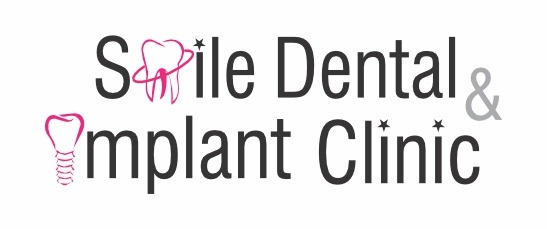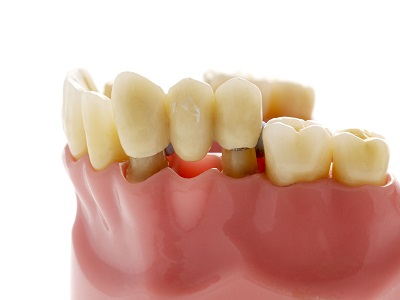What is Dental Bridge?
A dental bridge is a super durable appliance that replaces a missing tooth or missing teeth. It has a few pieces combined to squeeze out of the shadow space where your tooth or teeth used to be.
Dentalbm bridges are an option in contrast to fractional false teeth. An extension can help you eat and talk all the more really and furthermore cause your teeth to seem more appealing.
A dental bridge can be made of various materials, including gold, compounds, or porcelain. While supplanting a front tooth, porcelain is most frequently utilized on the grounds that it very well may be matched to your normal tooth tone.
This article will go over the various types of dental extensions. You will realize what's in store on the off chance that you really want to get a dental extension put, as well as the upsides and downsides of having a dental bridge.
Sorts of Dental Bridges
The fake teeth utilized in dental bridges are called pontics. You'll have a pontic for each missing tooth. Pontics are moored to a tooth close to the hole (projection teeth) or to a dental embed.
The four sorts of dental bridges are:
- Conventional fixed spans are the most widely recognized sort of extension. It remembers a crown for one or the other side of the pontic(s).
- Maryland dental scaffolds or tar fortified spans are frequently used to supplant front teeth. Rather than crowns, this dental extension utilizes porcelain or metal structures with "wings" attached to the rear of your teeth on one or the other side of the hole.
- Implant-supported bridges utilize an embed for each missing tooth that is precisely installed into your jawbone during one technique. The scaffold contains the pontics and is set over them in a later system.
- Cantilever bridges are not generally ordinarily utilized. At the point when just a single side of the hole has a characteristic tooth, the pontic(s) are secured by a solitary crown on that regular tooth.
Benefits of Dental Bridges
Dental bridges can give many advantages, including:
- Giving your mouth and grin a characteristic look
- Reestablishing your capacity to talk ordinarily, as missing teeth can make it hard to articulate words (articulate)
- Keeping up with a typical facial design by keeping bone misfortune from the jaw at the site of the missing tooth/teeth
- Assisting you with biting food all the more effectively
- Keeping contiguous teeth from moving into the unfilled space, can create some issues with your chomp and different intricacies
Drawbacks of Dental Bridges
Dental scaffolds in all actuality do have a few drawbacks, including:
- Future harm to the projection teeth can think twice about a span
- Microorganisms and plaque can get inside an extension or crown that doesn't fit well and cause tooth rot
- Crowns can change the design of your teeth and influence your chomp
- A bridge can implode in the event that the projection teeth are not sufficiently able to help it
- Projection teeth can be debilitated by the procedure(s) and may be supplanted by dental inserts
Is it true that you are a Good Candidate for a Dental Bridge?
Not every person is a decent possibility for a dental bridge.1 You should converse with your dental specialist about whether it might work out great for you to get a scaffold.
Factors that make you a decent possibility for a dental extension include:
- Missing at least one long-lasting teeth
- Having generally speaking great well-being (e.g., no serious ailments, diseases, or other medical conditions)
- Having solid teeth and a solid bone construction to help the extension
- Having great oral wellbeing
- Can perform legitimate oral cleanliness to keep up with the state of the dental scaffold
Getting a Dental Bridge
For most dental scaffolds, you'll have something like two techniques performed, and the cycle can consume a large chunk of the day.
A Maryland span requires fewer arrangements than different sorts of dental extensions on the grounds that the projection teeth needn't bother with to be ready.
No matter what sort you go with, your dental specialist should accept impressions or a computerized output of your teeth that the lab will use to shape the parts of the scaffold.
Conventional or Cantilever Bridge
The initial step to getting a conventional fixed or cantilever dental extension is setting up the projection tooth/teeth.
Your dental specialist will begin by eliminating a portion of the lacquer and dentin from the projection teeth to account for the crowns. Then, at that point, they'll put a brief extension over those teeth to safeguard them until the scaffold is put.
During a later arrangement, your dental specialist will:
- Eliminate the impermanent crowns
- Really take a look at the long-lasting crowns and extension for a legitimate fit
- Concrete the bridge set up
Now and again, the extension is all-time solidified during this strategy. Notwithstanding, your dental specialist might pick impermanent concrete all things being equal, which gives you an opportunity to ensure the extension fits appropriately before it is made long-lasting.
Maryland Bridge
For a Maryland span, all that necessities to happen to your projection teeth is a little drawing on the rear, which assists the wings with clinging to it.6
Whenever it's tried for legitimate fit, your dental specialist will:
- Place the extension
- Bond the metal wings to the projection teeth with a solid sap
- Fix the sap
Embed Supported Bridge
An embed upheld bridge expects a medical procedure to put the inserts in your jawbone followed by time for you to mend.
Recuperating time for an embed upheld span fluctuates significantly relying upon where in your mouth the inserts are and whether your jawbone should be moved toward helping the implants.
You might have a transitory extension to wear until your next system when your dental specialist will put the super durable scaffold over the inserts. This method includes little entry points in the gums, so mending time is more noteworthy than with different kinds of extensions.
Dealing with a Dental Bridge
Dental scaffolds are thought of as "super durable" on the grounds that you can't take them out like you can false teeth; in any case, they don't endure forever.
The typical dental scaffold endures somewhere in the range of five and seven years. With legitimate consideration, a few extensions can endure over 10 years. Propels in dental extension materials and techniques are probably going to make them considerably more strong in the future.8
The most effective way to benefit from your dental extension is to take appropriate consideration of it.
Step by step instructions to Make Your Dental Bridge Last
Great oral cleanliness is significant to keep your leftover teeth solid and sound. Having excellent oral well-being is likewise significant on the off chance that you need a long life expectancy for your scaffold.
Similarly likewise with your normal teeth, you really want to brush and floss your scaffold somewhere around two times every day.
Your dental specialist or dental hygienist will tell you the best way to floss and clean around your scaffold appropriately. It's likewise vital to see your dental specialist routinely for dental cleanings
Dietary Changes
Just after your scaffold is set, you might be particularly cautious about what you eat as your mouth is recuperating. Your dental specialist will guide you intended to follow during that time.
In the long haul, certain food sources can create some issues for dental scaffolds or projection teeth. Assuming you need your scaffold to endure and try not to harm it, you'll need to stay away from these food sources.
Food varieties you ought to keep away from in the event that you have a dental scaffold include:
- Chewy/tacky treats (can remove crowns from the projection teeth)
- Hard treats or tidbits
- Sweet food sources (can cause tooth rot under the crowns)
- Popcorn
- Nuts
Conclusion
There are benefits and disservices to getting a dental extension, however, studies have shown that with great oral cleanliness and routine dental visits, a dental scaffold can be a powerful, dependable answer for missing teeth.
In any case, certain variables determine who is a decent contender for a dental extension. Your dental specialist can assist you with choosing if a dental extension is an ideal for you, as well as which kind of dental scaffold will be the best fit.

